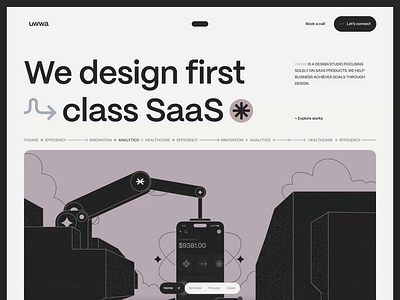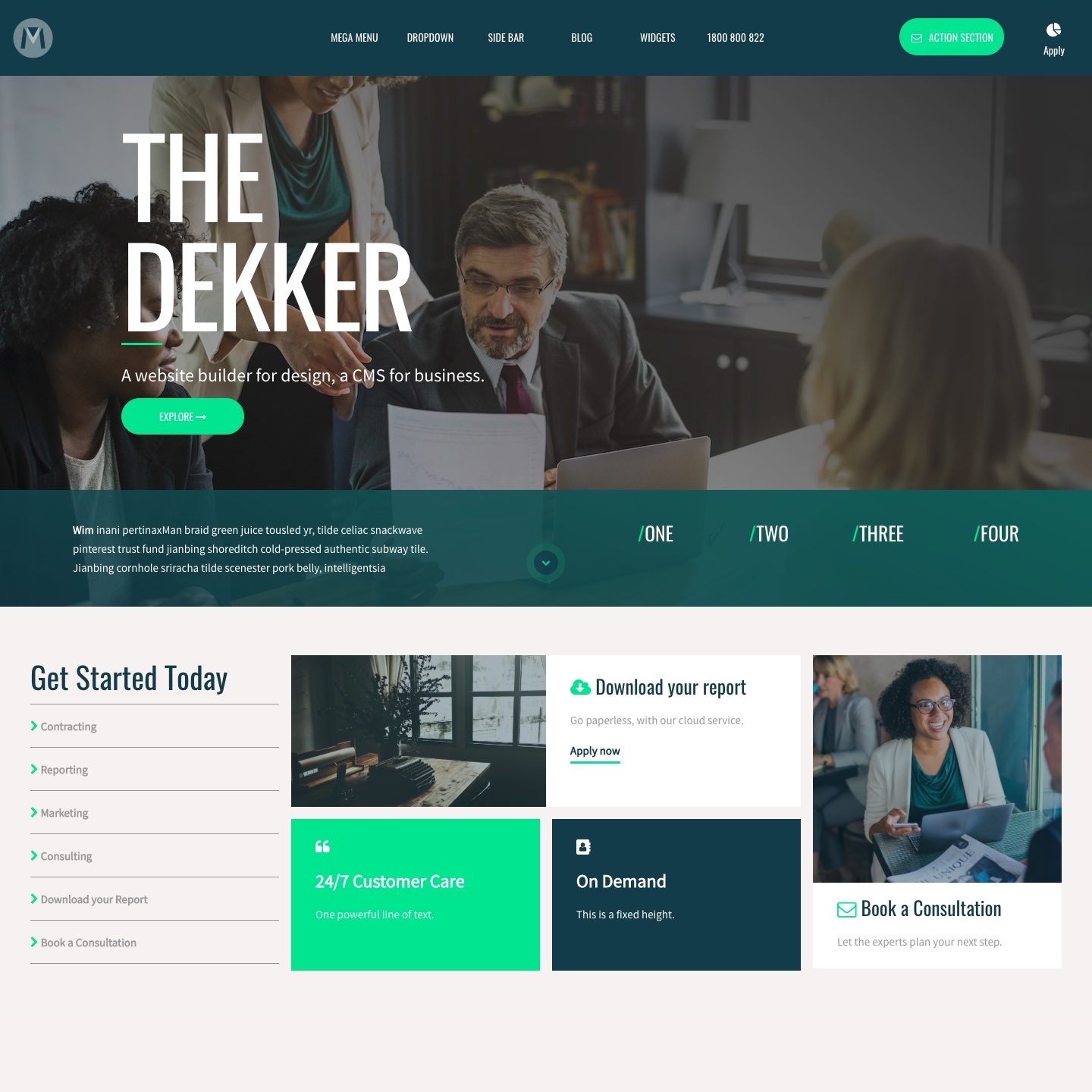Website Design Best Practices for Faster Load Times and Improved User Experience
Modern Web Site Layout That Catches Focus and Transforms
In a progressively digital landscape, modern website layout has emerged as an essential consider capturing customer attention and driving conversions. By strategically employing visual pecking order, receptive layouts, and involving interactive elements, designers can create experiences that not only attract site visitors but also facilitate purposeful communications. Reliable call-to-action techniques play an important role in guiding customers toward wanted outcomes. As we check out these vital parts, it becomes clear that understanding their interaction can substantially impact an internet site's performance and customer satisfaction. What are the crucial elements that genuinely make a difference?
Importance of Visual Hierarchy
Visual pecking order is a crucial aspect in internet site design, as it overviews customers' attention and improves their general experience. By purposefully organizing material, designers can guide users to one of the most vital details initially, thus increasing involvement and improving use. Reliable visual power structure utilizes numerous techniques, including dimension, shade, spacing, and contrast. Bigger aspects naturally draw the eye, while contrasting shades can highlight essential messages, making them stick out amongst more controlled elements.
Incorporating a rational flow in content setup is essential; for circumstances, placing one of the most important info on top of a page cultivates immediate recognition. Regular use of typography, such as differing font dimensions and designs, aids establish a clear web content framework. This company not just aids in navigating but additionally develops count on, as customers really feel a lot more comfy when they can conveniently discover what they are seeking.
Eventually, a well-executed visual pecking order not just improves aesthetic appeal but also dramatically impacts customer habits. By prioritizing vital elements and guaranteeing a seamless experience, developers can effectively convert site visitors right into customers, enhancing the significance of this foundational style concept in modern web site development.
Responsive Style for All Instruments
Producing a seamless experience across numerous devices is essential in today's digital landscape, where individuals accessibility internet sites from mobile phones, tablets, and desktops alike. Responsive layout is a vital method that makes sure sites adjust fluidly to different display resolutions, alignments, and sizes. By employing adaptable grids, photos, and CSS media queries, designers can create designs that maintain aesthetic stability and capability, regardless of the device being used.
The value of responsive design expands beyond aesthetics; it straight affects customer engagement and conversion prices. A website that operates well on all tools motivates longer gos to and lowers bounce prices, as individuals are most likely to communicate with content that is easy to browse. Search engines, particularly Google, prioritize mobile-friendly websites in their rankings, making responsive layout an important component of search engine optimization (SEO)
Including receptive style not just improves individual experience but also improves the growth process. By producing a solitary website that works throughout gadgets, companies can conserve time and resources contrasted to creating different mobile and desktop computer versions. Inevitably, receptive layout is an essential method for contemporary web site design, guaranteeing access and contentment for all users, no matter their gadget.
Involving Interactive Components
While a responsive layout lays the groundwork for a useful web site, incorporating appealing interactive aspects is vital for capturing user attention and cultivating much deeper connections. Website Design. Interactive components, such as animations, quizzes, and clickable infographics, produce a more vibrant customer experience, motivating visitors to spend more time on the site
Incorporating interactive functions can likewise direct users with complex info, making it easier to absorb web content. For instance, interactive sliders can illustrate item variants, while embedded video clips can provide demonstrations or endorsements that resonate greater than static pictures or message. Additionally, gamification methods, like rewards for completing tasks or involving with material, can improve individual motivation and retention.
Effective use have a peek at this website interactive aspects not only enhances the customer experience but can additionally result in higher conversion rates. By making communications delightful and insightful, services can grow a sense of loyalty and depend on with their audience. It is important to stabilize read interactivity with performance; excessively intricate features may impede website speed, adversely impacting individual complete satisfaction. Eventually, integrating properly designed interactive aspects can dramatically raise a website's efficiency, driving engagement and conversions in today's competitive digital landscape.
Streamlined Navigating Practices
Reliable navigating is a foundation of any effective website, as it straight influences customer experience and content access. Structured navigating methods make sure that customers can easily find info, boosting their communication with the website. A well-structured navigation menu should be instinctive and easy, usually including a restricted number of main groups to avoid frustrating visitors.
To attain structured navigating, developers should focus on an ordered structure that rationally organizes web content. Applying breadcrumb routes can offer customers with context regarding their current area within the site, permitting smooth backtracking. Furthermore, using drop-down menus can effectively save area while still supplying access to subcategories.
Receptive layout is critical, as navigating must be practical throughout all devices (Website Design). Mobile customers, in particular, advantage from touch-friendly menus and retractable areas that maintain functionality without endangering visual appeals

Reliable Call-to-Action Strategies
A well-crafted call-to-action (CTA) is important for leading individuals towards preferred results on a website, as it motivates them to involve with content or purchase. To maximize their effectiveness, CTAs need to be clear, compelling, and purposefully placed throughout the site.
First, utilize action-oriented language that connects urgency or worth, such as "Begin," "Sign up with Currently," or "Claim Your Discount rate." This language not only encourages users yet likewise sets clear assumptions concerning the next advice steps.
Second, consider style aspects; CTAs should stand out aesthetically through contrasting colors, sufficient whitespace, and prominent positioning. A button that is simple to see and click increases the probability of individual communication.
Furthermore, individualizing CTAs based upon individual behavior or demographics can substantially enhance engagement. Tailored messages resonate a lot more with individuals, driving higher conversion prices.

Conclusion
To conclude, contemporary internet site design emphasizes the integration of aesthetic hierarchy, receptive formats, involving interactive elements, streamlined navigation, and effective call-to-action strategies. These parts collectively improve individual experience, making certain that visitors remain engaged and motivated to check out material additionally. By focusing on these style concepts, organizations can considerably improve user retention and conversion rates, eventually resulting in higher success in the digital landscape. The constant advancement of website design emphasizes its critical role in effective online communication and marketing.
In a progressively digital landscape, modern-day web site style has actually arised as a critical factor in recording user attention and driving conversions.Aesthetic power structure is a critical aspect in site layout, as it overviews users' focus and improves their overall experience.The relevance of responsive layout prolongs beyond aesthetics; it straight impacts customer interaction and conversion prices.Integrating receptive style not just improves user experience however also enhances the advancement procedure. Eventually, receptive design is a basic strategy for contemporary website style, ensuring availability and complete satisfaction for all customers, regardless of their gadget.